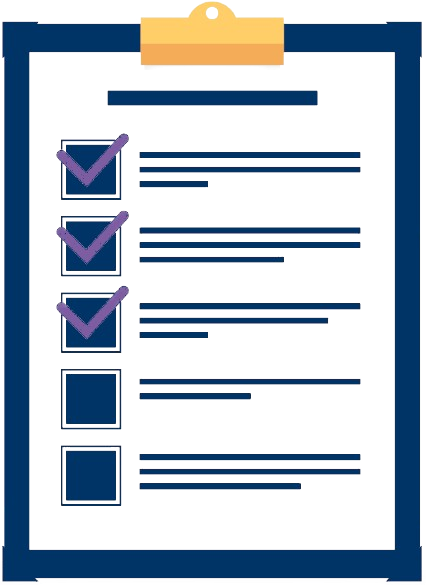Suggestions based on the Question and Answer that you are currently viewing
Using the IS/LM model. under what circumstances will (a) a rise in investment and (b) a rise in money supply cause a large rise in national income?
What is an industrial robot?
Tomiko is a 50 percent owner (partner) in the Tanaka partnership. During the year, the partnership reported $1,000 of interest income and $2,000 of dividends. How much of this income must Tomiko include in their gross income?
Harriet, Herm, and Ronde formed an S corporation called Innovet. Harriet and Herm both contributed cash of $25,000 to get things started. Ronde was a bit short on cash but had a parcel of land valued at $60,000 (basis of $50,000) that he decided to contribute. The land was encumbered by a $35,000 mortgage. What tax bases will each of the three have in their stock of Innovet?
What is the specific energy in metal machining?
How do hot assets affect the character of gain or loss on the sale of a partnership interest?
Under what circumstances would the IRS issue an acquiescence? Anonacquiescence? An action on decision?
Name some products that represent microsystem technology.
In Problem 21.1, suppose the rake angle were changed to 0°. Assuming that the friction angle remains the same, determine (a) the shear plane angle, (b) the chip thickness, and (c) the shear strain for the operation.
Consider a state pension fund that needs to generate a series of fixed payments for its retirees. Assume that the compensation of the fund’s portfolio managers is tied to the return earned on the investments each year. Write a short essay that explains how the compensation plan might lead to investment strategies that do not serve the needs of the retirees.
In Problem 42.4, the design specification on the diameter is 28.0 ± 2.0 mm. (a) What proportion of parts fall outside the tolerance limits? (b) If the process were adjusted so that its mean diameter = 28.0 mm and the standard deviation remained the same, what proportion of parts would fall outside the tolerance limits? (c) With the adjusted mean at 28.0 mm, determine the value of the process capability index.
A 2.0-in-thick slab is 10.0 in wide and 12.0 ft long. Thickness is to be reduced in three steps in a hot rolling operation. Each step will reduce the slab to 75% of its previous thickness. It is expected that for this metal and reduction, the slab will widen by 3% in each step. If the entry speed of the slab in the first step is 40 ft/min, and roll speed is the same for the three steps, determine: (a) length and (b) exit velocity of the slab after the final reduction
Assess the operation and success of the HIPC programme?
In 2014, Gurney Construction Company agreed to construct an apartment building at a price of $1,200,000. The information relating to the costs and billings for this contract is shown below. 2014 2015 2016 Costs incurred to date $280,000 $600,000 $ 785,000 Estimated costs yet to be incurred 520,000 200,000 –0– Customer billings to date 150,000 500,000 1,200,000 Collection of billings to date 120,000 320,000 940,000 Instructions (a) Assuming that the percentage-of-completion method is used, (1) compute the amount of gross profit to be recognized in 2014 and 2015, and (2) prepare journal entries for 2015. (b) For 2015, show how the details related to this construction contract would be disclosed on the balance sheet and on the income statement.
Use the information presented in BE7-15 for Horton Corporation. Prepare any entries necessary to make Horton’s accounting records correct and complete.
Define process capability.
In researching a tax question, you find only one authority (a trial-level court opinion) that is directly on point. Which court would you least prefer to have heard this case, and why?
What is net interest? Identify the elements of net interest and explain how they are computed.
A drawing operation is performed on 3.0 mm stock. The part is a cylindrical cup with height = 50 mm and inside diameter = 70 mm. Assume the corner radius on the punch is zero. (a) Find the required starting blank size Db. (b) Is the drawing operation feasible?
What hurdles (or limitations) must partners overcome before they can ultimately deduct partnership losses on their tax returns?
Fosbre Corporation’s April 30 inventory was destroyed by fire. January 1 inventory was $150,000, and purchases for January through April totaled $500,000. Sales revenue for the same period were $700,000. Fosbre’s normal gross profit percentage is 35% on sales. Using the gross profit method, estimate Fosbre’s April 30 inventory that was destroyed by fire.
Why did the Fed purchase long-term Treasury securities in 2010, and how did this strategy differ from the Fed’s usual operations? (LO2, LO3)
A hot rolling mill has rolls of diameter = 24 in. It can exert a maximum force = 400,000 lb. The mill has a maximum horsepower = 100 hp. It is desired to reduce a 1.5 in thick plate by the maximumpossible draft in one pass. The starting plate is 10 in wide. In the heated condition, the work material has a strength coefficient = 20,000 lb/in2 and a strain hardening exponent = zero. Determine (a) maximum possible draft, (b) associated true strain, and (c) maximum speed of the rolls for the operation
There are 23 correct answers in the following multiple choice questions (some questions have multiple answers that are correct). To attain a perfect score on the quiz, all correct answers must be given. Each correct answer is worth 1 point. Each omitted answer or wrong answer reduces the score by 1 point, andeach additional answer beyond the correct number of answers reduces the score by 1 point. Percentage on the quiz is based on the total number of correct answers. 42.1 Which of the following quality aspects would be classified as examples of freedom from deficiencies rather than product features (two correct answers): (a) components within tolerance, (b) location of ON/OFF switch, (c) no missing parts, (d) product weight, (e) reliability, and (f) reputation of the company? 42.2 If the product tolerance is set so that the process capability index = 1.0, then the percentage of parts that are within tolerance will be closest to which one of the following when the process is operating in statistical control: (a) 35%, (b) 65%, (c) 95%, (d) 99%, or (e) 100%? 42.3 In a control chart, the upper control limit is set equal to which one of the following: (a) process mean, (b) process mean plus three standard deviations, (c) upper design tolerance limit, or (d) upper value of the maximum range R? 42.4 The R chart is used for which one of the following product or part characteristics: (a) number of rejects in the sample, (b) number of reworked parts in a sample, (c) radius of a cylindrical part, or (d) range of sample values? 42.5 Which one of the following best describes the situations for which the c chart is most suited: (a) control of defective parts, (b) mean value of part characteristic of interest, (c) number of defects in a sample, or (d) proportion of defects in a sample? 42.6 Which of the following identify a likely out-of-control condition in a control chart (three correct answers): (a) consistently increasing value of x , (b) points near the central line, (c) points oscillating back and forth across the central line, (d) R outside the control limits of the R chart, (e) sample points consistently slightly above the central line, and (f) x outside the control limits of the x chart? 42.7 Which of the following are the three main goals in a total quality management (TQM) program: (a) achieving customer satisfaction, (b) computing defects per million, (c) continuous improvement, (d) developing robust product and process designs, (e) encouraging the involvement of the entire workforce, (f) forming worker teams, (g) statistical process control, and (h) zero defects? 42.8 Which one of the following measures in a Six Sigma program allows products of different complexity to be directly compared: (a) defects per million units, (b) defects per million opportunities, or (c) defective units per million units? 42.9 Which of the following principles and/or approaches are generally credited to G. Taguchi (two correct answers): (a) acceptance sampling, (b) control charts, (c) loss function, (d) Pareto priority index, and (e) robust design? 42.10 Which of the following phrases relating to ISO 9000 are correct (three correct answers): (a) certified by the International Standards Office located in Geneva, Switzerland, (b) developed by the International Organization for Standardization located somewhere in Europe, (c) establishes standards for the quality systems and procedures used by a facility, (d) establishes standards for the products and services delivered by a facility, and (e) registration in ISO 9000 obtained through a third-party agency that certifies the facility’s quality systems? 42.11 The two basic types of inspection are inspection by variables and inspection by attributes. The second of these inspections uses which one of the following: (a) destructive testing, (b) gaging, (c) measuring, or (d) nondestructive testing? 42.12 Automated 100% inspection can be integrated with the manufacturing process to accomplish which of the following (two best answers): (a) better design of products, (b) feedback of data to adjust the process, (c) 100% perfect quality, and (d) sortation of good parts from defects? 42.13 Which one of the following is an example of contact inspection: (a) coordinate measuring systems, (b) machine vision, (c) radiation techniques, (d) scanning laser systems, and (e) ultrasonic techniques? 42.14 Which one of the following is the most important application of vision systems: (a) inspection, (b) object identification, (c) safety monitoring, or (d) visual guidance and control of a robotic manipulator?
What is meant by the term make-to-stock production?
The benefits of buying with AnswerDone:

Access to High-Quality Documents
Our platform features a wide range of meticulously curated documents, from solved assignments and research papers to detailed study guides. Each document is reviewed to ensure it meets our high standards, giving you access to reliable and high-quality resources.

Easy and Secure Transactions
We prioritize your security. Our platform uses advanced encryption technology to protect your personal and financial information. Buying with AnswerDone means you can make transactions with confidence, knowing that your data is secure

Instant Access
Once you make a purchase, you’ll have immediate access to your documents. No waiting periods or delays—just instant delivery of the resources you need to succeed.
